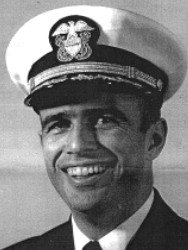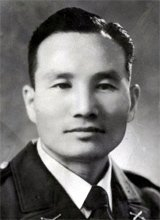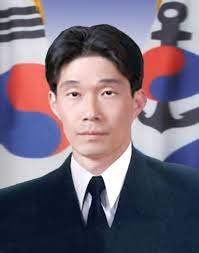Even after Korean War, allies pay a heavy price to protect DMZ
![South Korean soldiers stand guard near the military demarcation line in Yeoncheon County, Gyeonggi. [JOONGANG PHOTO]](https://koreajoongangdaily.joins.com/data/photo/2023/07/24/40ba7559-5c35-428f-be45-3ce34b343ee9.jpg)
South Korean soldiers stand guard near the military demarcation line in Yeoncheon County, Gyeonggi. [JOONGANG PHOTO]
Thousands of South Korean and U.S. soldiers have given their lives to protect the demilitarized zone (DMZ) dividing the two Koreas in the 70 years since the "end" of the Korean War (1950-1953).
According to the Defense Ministry, 4,360 soldiers have been killed in military operations to defend South Korea against North Korean attacks since the Armistice Agreement was signed on July 27, 1953.
Of these, 4,268 soldiers were from South Korea and 92 were from the United States.
The Armistice Agreement brought the Korean War's hostilities to a halt — mostly. However, with no formal end of the war declared, the two sides technically remain at war.
On Nov. 20, 1974, a South Korean soldier and a U.S. officer died in the DMZ in Yeoncheon County, Gyeonggi.
U.S. Navy officer Commander Robert M. Ballinger and late South Korean Marine Lt. Kim Hak-cheol were killed by a booby trap set in a tunnel the North Koreans had dug below the military demarcation line, or MDL.

U.S. Navy officer Commander Robert M. Ballinger
North Korean troops even opened fire on South Korean and U.S. personnel as they began investigating the site of the tunnel after spotting steam rising from the ground.
The tunnel was about 90 centimeters (35.4 inches) wide, 1.2 meters (3.9 feet) high, 45 meters deep and 3.5 kilometers (2.2 miles) long. It was one of several tunnels the North Koreans had dug under the MDL so that soldiers could infiltrate the South.
Six other South Korean and U.S. troops were severely injured in the incident.
Ballinger was deployed in South Korea a year earlier in 1973, attached to the United Nations Command Military Armistice Commission.
He had earned a Silver Star in 1964 for defeating a Viet Cong ambush as an advisor to the Vietnamese 21st River Assault Group, operating an 81-mm mortar himself.
Of the 4,268 South Korean military personnel who have given their lives to protect South Korea from the North's hostile actions since the Armistice Agreement, 4,128 were from the Army, 58 from the Navy, 16 from the Air Force and 66 from the Marine Corps.
Seventy-five of the 92 U.S. soldiers who died in North Korean attacks lost their lives between 1967 and 1969, when North Korea intensified its aggression against South Korea while the United States was bogged down in Vietnam.

Brig. Gen. Lee Ik-soo of the Korean Army
Brig. Gen. Lee Ik-soo of the Korean Army was shot and killed by North Korean guerrillas on Jan. 21, 1968, during a failed attempt to assassinate South Korean President Park Chung Hee.
Lee was a hero who fought against Japan as part of the Korean Liberation Army. He twice received a Hwarang medal, the fourth class of the country’s four-degree Order of Military Merit, for his service during the Korean War, a Chungmu medal and even a Silver Star from the United States.
The Chungmu medal is the third class of the Order of Military Merit.
Soldiers continued to sacrifice their lives defending South Korea from North Korean aggression in the present century, too.
Six military personnel died in the Second Battle of Yeonpyeong in 2002, while 46 sailors lost their lives in the sinking of the warship ROKS Cheonan and two died in the shelling of Yeonpyeong Island in 2010.
![Staff Sergeant Seo Jeong-woo [SOUTH KOREAN MARINE CORPS]](https://koreajoongangdaily.joins.com/data/photo/2023/07/24/8450ec82-82d7-4a63-8d75-5a94eca82a93.jpg)
Staff Sergeant Seo Jeong-woo [SOUTH KOREAN MARINE CORPS]
Staff Sergeant Seo Jeong-woo lost his life when North Korea shelled Yeonpyeong Island on Nov. 23, 2010.
He was just one month away from his discharge.

Senior Chief Petty Officer Min Pyeong-gi
Senior Chief Petty Officer Min Pyeong-gi was killed in the sinking of the ROK Cheonan on March 26, 2010.
He began serving in the Navy while still at university, consoling his mother by telling her he could "study and serve at the same time."
Despite these continuous sacrifices, military personnel continue to protect the 155-mile DMZ to this day.
“The ceasefire line divides capitalism and communism,” said Park Myung-lim, a political science professor at Yonsei University.
“Maintaining the ceasefire line has been of great significance internationally, having prevented a second Korean War while simultaneously securing security in East Asia over the past 70 years.”
BY LEE CHUL-JAE, CHO JUNG-WOO [cho.jungwoo1@joongang.co.kr]










with the Korea JoongAng Daily
To write comments, please log in to one of the accounts.
Standards Board Policy (0/250자)